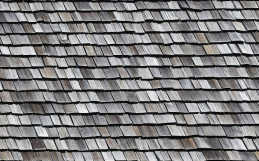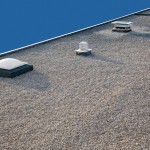Other than certain size sheds or decks, almost everything that’s built in the state of Washington has to go through a permitting process. This involves turning in plans, addressing code requirements, and getting approval from the local jurisdiction. As part of a home, roofing requirements must be met before the house can be considered habitable.
Which makes sense, especially in our neck of the woods. With what seems like non-stop rain for six months and the occasional bouts with snow and ice, a flimsy roof doesn’t do us much good. Even in the summer, the roof protects the interior of the home from heating up to uncomfortable levels.
Building codes for roofing have their own set of specifications, generally dealing with the weight of the roof for the structure below and properties of the roof. With a large variety of roofing materials, from asphalt shingles to slate tiles, weight can vary greatly. All of that needs to be addressed during the planning stage.
Basic Roof Requirements
It shouldn’t come as any surprise that there are a handful of specifications that must be met when building a house, industrial facility, or commercial plant that has a covering. Almost every type of roof cover needs decking, underlayment, and roofing material.
Dead/Live Loads
This refers to how much the covering weights just by itself. As we stated earlier, some materials are a lot heavier than others. Live loads take into account people walking on the roof or the amount of snow and ice it might encounter. A home in Florida may not need to be graded as strong as a home in Wisconsin.
However, Florida homes need to address wind loading much more than a homestead in Wisconsin due to the high wind probability and hurricanes. In Washington, especially along the coast or the Columbia River Gorge, we get a little bit of both. So local building codes may differ slightly.
Fire Resistance
Roof coverings are graded on their effectiveness against fire: A, B, C, or non-classified with A being the most fire-resistant. Washington requirements aren’t as stringent as they are in wildfire-prone areas of California, but some Evergreen State jurisdiction (or even insurance carriers) may require specific grades.
In order to prevent a rooftop fire from expanding to the rest of the house, several materials are inherently fire resistant. Metal roofing, clay tiles, slate shingles, and so on. Obviously, cedar shake roofs would be highly susceptible to flames and asphalt shingles will burn as well if consumed by fire.
Ventilation
This has become a big concern because of mold and mildew. Even so, plumbing vents, chimney vents, and other required vents will still need to be addressed if they go through the roof. In attic spaces, a certain amount of vents are needed depending on the roof size.
HOA/Community Specifications
These can vary from neighborhood to neighborhood, although these requirements have less to do with strength or load requirements and more with the appearance of the home. For example, if views are a primary selling point in a new subdivision, builders may not be allowed to build homes with certain pitches that block the views of other homes.
These are known as CC&Rs – Covenants, Conditions & Restrictions. Put in place by a Homeowner Association, these rules ensure a neighborhood has a relatively uniform appearance throughout. It could refer to the color or type of roofing material or even the style of the gutters.
These will need to be considered on a case by case basis, of course. However, all other city or county requirements will need to be met in addition to any specific appearance regulations.
Professional Roof Installations
Most of these requirements are met when the home was first built. Even if your home is a new construction, it’s important to get a thorough inspection of the house before buying. Not only will they spot potential issues with the roof, but they also make a sweep of the entire home. The peace of mind is well worth it.
However, you may be considering a new roof as part of a whole home remodel. Warner Roofing and Construction has been installing roofs in Clark County since 1992 and is knowledgeable in the local permitting processes and codes. We work with cedar shake, composite slate, composition shingles, and other materials.
In addition, we perform repairs, gutter installations, and maintenance on both residential and commercial buildings. Warner Roofing and Construction is licensed, bonded and insured and we look forward to working with you. Contact us today to see how we can help!







